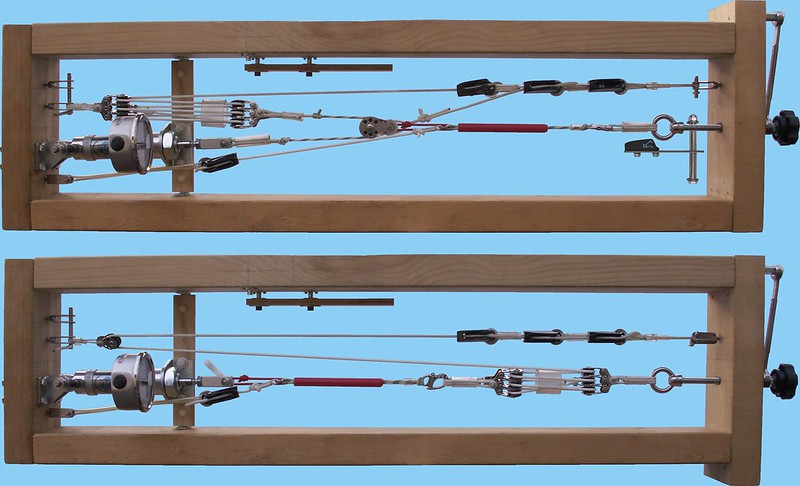Does that mean that "Gs" felt in turn are not felt in the towline ?
In that example the towline is feeling (very briefly) - as a consequence of the turn - the maximum tension the weak link will allow.
In theory, the weak link doesn't guarantee that you can't break the glider on tow. You can break the glider in free flight if you try hard enough and if you were really good and really creative you might be able to figure out some way to break it while still connected to a tug through a legal weak link.
And it's also possible to have a two G weak blow when you're standing on your tail, going up like a rocket, and needing two and a quarter Gs to ride out the climb and live. But...
- You:
-- probably have a bigger risk of being hit by an asteroid
-- can use ribbons along the runway to make sure you don't get into a situation like that
- The air that could create a situation like that is going to kill you anyway if you don't hit it exactly right - and nine out of ten times you won't.
Also note that even with virtually the entire world population of solo gliders towing with those stupid PATHETIC loops of 130 pound Greenspot we virtually never see anything more serious than downtube breaking crashes if the tug and glider are using good releases and doing everything else reasonably well.
If not, is that why you don't go further that 1.5G...
In the real world if you fly one and a half Gs and don't do anything extremely stupid (like putting a release lever on a downtube) you will never:
- have a serious problem
- come anywhere NEAR to maxing out your weak link
And if you go much higher than that you will have to start worrying about:
- beefing up the releases and materials and hardware you're using to connect things to your harness and glider
- what's going on with things at the front end.
And on the goddam Dragonfly with that idiot tow mast breakaway that Bobby built in you had to worry about what's going on with things at the front end a long time ago.
...values you think as a maximum to experiment in flight?
There is NOTHING that can be learned by putting tow system components into the air - none of this stuff functions any differently at two thousand feet going 35 miles per hour than it does on the kitchen table at home. EVERYTHING you need to know can and MUST be determined on the ground through load testing, mathematical models, logic, and ten year old kid common sense.
You can learn more in a couple of minutes with something like:
http://www.flickr.com/photos/psucvollibre/6055817574/

or:
http://www.flickr.com/photos/aerotowrelease/8317889807/

than a couple hundred professional pilot shitheads can in a dozen lifetimes.
And...
http://www.hanggliding.org/viewtopic.php?t=21377
AT several Questions
deltaman - 2011/04/04 07:14:09 UTC
I won't travel in US to learn where to put wl on the V-bridle system.
...you won't have to travel to the US to help get things figured out.

